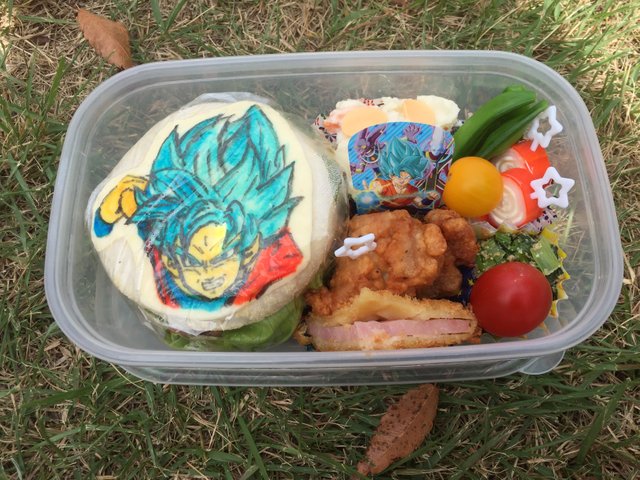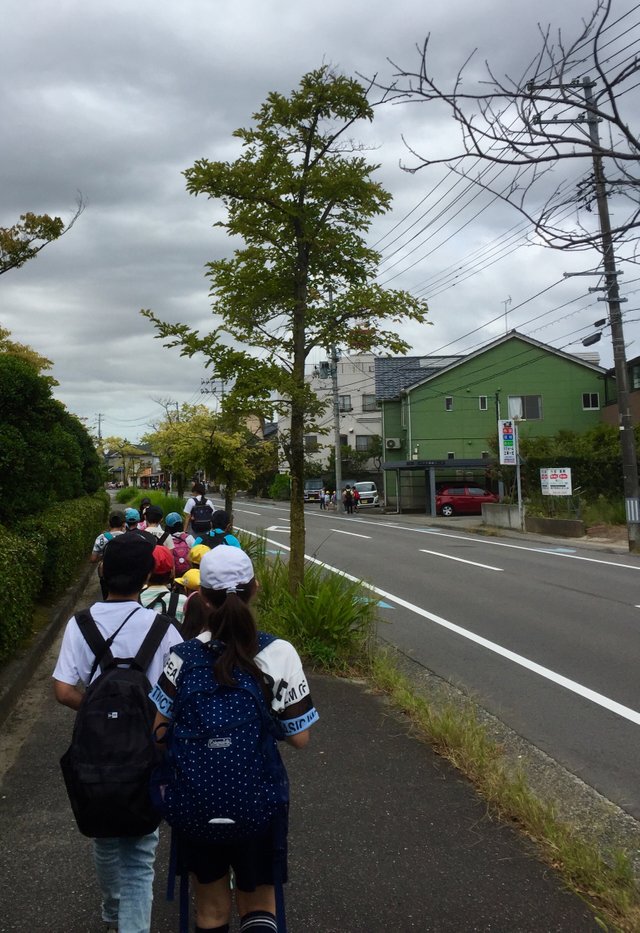This Is Japan
Explore everyday life in Japan

While it may look a school walk out,
seeing close to 600 elementary school students walking through the city in small groups, it’s actually a school sanctioned event. Something called a zenkou ensoku, or in English, an “all school outing.”
Japanese elementary schools have many events throughout the school year, which begins in April and ends in March. There is an annual sports day, in which all of the students are divided into two teams and spend an entire day competing in two categories, cheering and athletic events. There is a chorus festival, in which every class from every grade sings a song to the school. There is a marathon day, in which all of the students from each grade, divided by gender into two groups, compete in a one to two mile run (roughly). There are class trips that tend to focus on having students spend time in nature and work together to cook a lunch of curry or some other food. There are work-experience days, and there are events like this one, that challenges students to complete a physical task that is within their ability but, perhaps, at the edge of their limits.

In the city where I live,
each of the schools has a day where all of the students divide into mixed grade groups of about seven students and walk between 10 and 15 kilometers. The goal is generally to walk to a park that is between 5 to 8 kilometers from the school, eat lunch there, and spend an hour and a half playing games of the students’ choosing, generally dodge ball and some form of tag. After running around freely for an hour and a half, the students are expected to return to their school on foot, and to walk home after that.
For first grade students, who are either six or seven years of age, this outing can be quite a challenge. For many students, it is the first time in their lives they have walked this far. For sixth grade students, this outing can be quite a challenge because they are responsible for the safety and well being of their group. They are the ones who must keep track of where their group members are at all times. They are the ones are expected to consider the ability of every one in their group and set the pace at which they will walk. They are the ones who are supposed to make final decisions about where to set up camp in the park and eat lunch, and which games to play, etc. If there are problems that arise, it is the sixth graders that are expected to do their best to find resolutions.
There are, of course, adult chaperones following the groups around who can step in when and if necessary, but the point of this kind of school outing is for students to take responsibility for themselves and for the others in their groups. In a sense, it is a full day of team building and leadership experiences disguised as a day of walking and free play.

This is an ongoing series that explores various aspects of daily life in Japan from the vantage point of Niigata City, a city of 800,000 people on the coast of the Sea of Japan. My hope is that this series will not only reveal to its followers, image by image, what some of Japan looks like, but that it will also inform its followers about unique Japanese items and various cultural and societal practices. If you are interested in getting intermittent updates about life in Japan, please consider following me, @boxcarblue. If you have any questions about life in Japan, please don’t hesitate to ask. I will do my best to answer all of your questions.
To listen to the audio version of this article click on the play image.

Brought to you by @tts. If you find it useful please consider upvoting this reply.
You should consider reposting your entire “This is Japan” series. With #newsteem, and new Steemians that have not seen your old content. Now would be a good time to do it. If your interested. I think it would be a huge success!
I’ve thought about that before, but I felt like reposting old content might be breaking some kind of unspoken rule or something. I could definitely revisit a lot of the old stuff and touch it up. Initially I had planned to not cover the same topic twice, which is why I probably burned out a bit, but since things tend to get buried in the past, especially on this platform, it’s probably better to cover the same material over and over again from slightly different angles.
Thanks for the support and advice.
I would love to see this series again. Must have missed many of your earlier posts.
Thanks. I guess I’ll find a way to sprinkle them into the rotation from time to time.
With sites like Steempeak, there are plenty of tools to organize blogposts so they don’t get buried like on Steemit. Give it s try if you haven’t already!
I will. Thanks!
I always enjoyed what we called field trips!
I called them field trips too. I always loved field trips and assemblies. I often get challenged when I tell people here that the best translation for ensoku is field trip. Apparently field trips are supposed to have a learning goal in mind. For example, you go to a museum and learn about history or science, etc. Japanese schools often have field trips that are based more on building relationships, making memories, and sharing experiences than learning in an academic sense. Since I don’t remember ever having an all school field trip, I used the word outing here. It feels strange to me though.
Now, such outings sound really educational: not just showing kids the (historical) sites or going on a compulsory mueum outing (as funded by the state often to oblige their idea of what is a useful conformist education; or meant to give teachers a break from trying and failing to fix stuff in their brains); but asking them to explore their own limits and experiences.
(That lunchbox sure takes the idea of "power food" to another level.)
That’s funny. Maybe the images will transfer power to the eater. I’m pretty sure, though, that the ingredients don’t fall under the ‘super food’ category. I think my wife made that Dragon Ball plaque by painting food coloring onto a sheet of gelatin and resting it on a piece of processed cheese.
As for the learning that took place on this outing, it’s hard to measure, but I think it was a great experience for the kids involved in many ways.
That lunch looks very exotic and colourful, could not tell you what have of it is, and if it's even edible :D
Underneath the Dragon Ball character, which I think my wife made by painting food coloring onto a sheet of gelatin and laying it over a piece of cheese, is an English muffin with a hamburger inside. Next to that is a piece of karage (fried chicken), and a portion of ham Katsu (breaded and fried ham). Above the chicken is something like a cupcake wrapper with potato salad inside, and the red swirly thing is steamed fish rolled up with cheese. As for the vegetables, they’re easily identifiable;-) It’s all edible.
Thanks for stopping by.
How interesting that they spend many events together... I think it builds bonds...
And I like that lunchbox too! Yummm.... ;)